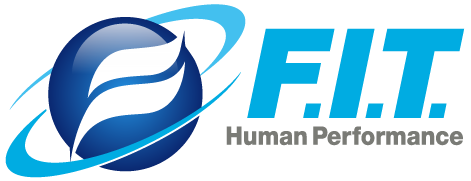Retract - FIT Human Performance
Retract
April 10, 16 –
For the first few years of my F.I.T. Human Performance business I drove my vehicle around The Woodlands with a wrap on every side. Near the upper rear quarter panel I had a decal asking “got posture?” Occasionally I would see people read that and respond immediately by trying to lift their shoulders and chin up high … nice try. Right now those of you reading this have been summoned by a part of your brain to attempt posture. Your doing it aren’t you? Yes, tighten your tummy, pull your head up into balance, and most importantly retract your scapula. This is a true fundamental phase for proper posture to occur. If you cannot ‘adduct’ or ‘retract’ your scapula … proper posture cannot happen.
 The scapula, or shoulder blade, is attached to over a dozen muscles, including the middle trapezius, lower trapezius, and rhomboids. These three muscles act to retract the scapula, thus bringing the shoulder blades together. This movement is called scapular adduction, or scapular retraction. If you have a poor posture in which your shoulders are rounded forward, this means that you have tightness in some of your anterior muscles, such as those in your chest and front shoulders. Also, you may have weak upper and middle back muscles, such as the aforementioned traps and rhomboids. To correct these postural deficiencies, you need to perform back exercises that involve scapular retraction. This will help you strengthen the weaker muscles and, overtime, restore normal posture. In short, if you cannot draw your scapula together on demand comfortably…the imbalance of torso muscles IS and has begun to round out your upper back, eventually creating a hunch back look.
The scapula, or shoulder blade, is attached to over a dozen muscles, including the middle trapezius, lower trapezius, and rhomboids. These three muscles act to retract the scapula, thus bringing the shoulder blades together. This movement is called scapular adduction, or scapular retraction. If you have a poor posture in which your shoulders are rounded forward, this means that you have tightness in some of your anterior muscles, such as those in your chest and front shoulders. Also, you may have weak upper and middle back muscles, such as the aforementioned traps and rhomboids. To correct these postural deficiencies, you need to perform back exercises that involve scapular retraction. This will help you strengthen the weaker muscles and, overtime, restore normal posture. In short, if you cannot draw your scapula together on demand comfortably…the imbalance of torso muscles IS and has begun to round out your upper back, eventually creating a hunch back look.
 If you cannot properly do scapula retraction your spine may begin to think you want it to start rounding out. I do not think you do. We can straighten it out today, give me a call! 832-813-8010
If you cannot properly do scapula retraction your spine may begin to think you want it to start rounding out. I do not think you do. We can straighten it out today, give me a call! 832-813-8010
In good health,
Bob
“Look well to the spine for the cause of disease.” – Hippocrates



